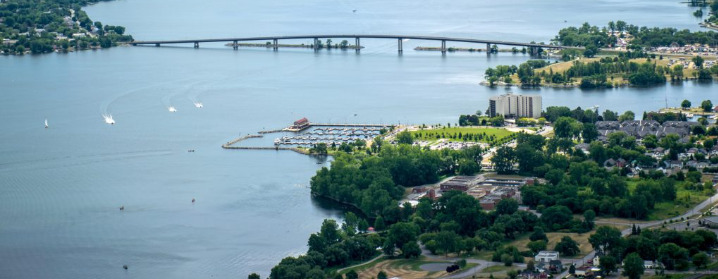Water, Weather & Environment
Sharing water data expands monitoring network

Conservation authorities & open data standards inspire regional cooperation
Taking advantage of advancements in web technologies, a significant number of conservation authorities (CAs) formed an Ontario conservation authority hub. They recognized a collective need for a central, online repository to conveniently and safely share vast amounts of information for the management of water and other natural resources on behalf of nearly a million residents. The hub uses KISTERS Web Interoperability Solution (KiWIS), or web services, to enhance and streamline access to its spatial and temporal data — helping municipalities with land use, emergency planning and community relations.
- The challenge
- The solution
- The benefits
The challenge
The challenge
As a few Canadian watershed management agencies needed to replace their legacy data systems, they sought a robust, configurable off-the-shelf tool to record, analyze and report real-time data feeds.
They collectively formed the following specifications for an ideal database:
- Ability to capture a high-density of data from 100 monitoring stations from hourly and daily telemetry to 5- and 15-minute increments
- Ability to expand the geographic scope to include data for areas more likely to flood
- Offer flexible data visualization options
- Ability to ease the calculation and reporting of cumulative impacts from urban development and conservation initiatives
In addition, this group of engineers and water resources specialists were receiving a high volume of requests from municipalities, farmers and outdoor sports enthusiasts. Kayakers, canoeists, fisherman, etc. were interested in time-sensitive data related to their unique needs. The phone calls created extra demand. The conservation authority staff knew the Internet could proactively communicate information the public wanted.
The solution
The solution
Today the Ontario conservation authority hub creates and publishes data online using Esri’s ArcGIS and Water Information System by KISTERS (WISKI), which empowers internal data managers to validate, analyze and report information in real time. These professionals can enforce the integrity of data from each authority.
Concurrently the adoption of open data standards in KISTERS web services inspired regional and province-wide collaboration in the areas of flood management, water quality management and ecological management. Rather than respond to frequently asked questions, data managers specify parameters shared with external data users. The ability to filter and export results in nearly real time and in various file formats allows for easy integration into powerful graphing, mapping and visualization tools.
The benefits
The benefits
Consistency. Convenience. Cooperation.
The Ontario hub maintains consistency of data collection, management and reporting for each different conservation authority that reports to the Ontario Ministry of Natural Resources.
This coordinated effort empowers each authority to more efficiently manage flood risk and ecosystems using the monitoring networks of surrounding authorities and their own. Seamless integration with geospatial information systems (GIS) provides a truly regional evaluation of current conditions and historic trends.
Online information sharing provides convenience to data managers and the public. The hub saves time by automating reports, letting users pull specific details instead of manually pushing out data. Commonly requested information is presented quickly and concisely via graphs, tables and maps.
Ultimately the hub results in more effective management than any single conservation authority could support. The open network increases public safety and quality of life in the Ontario region for a modest investment because storms and floods don’t discriminate by county let alone conservation authority.
This hub has inspired a hub of conservation authorities in western Ontario.
Share this
The hub assists in our flood forecasting efforts, providing nearby data to fill gaps and have redundancy options in our gauge poll plans. We have experienced greater sharing of knowledge, work procedures and communication.
Eastern Ontario Conservation Authority Hub Administration -- eastern Ontario, Canada